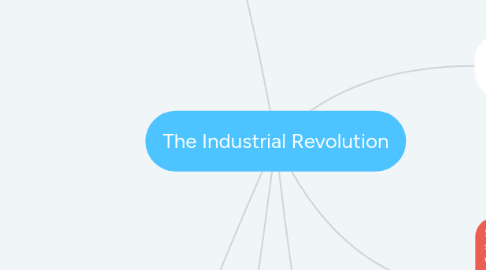
1. (Beal and Bolick, 2013, p.69)
2. Economics of the Industrial Revolution
2.1. Capitalism
2.1.1. Adam Smith
2.1.2. Division of labor
2.1.2.1. Activity: Simulation of division of labor
2.1.2.1.1. SWBAT explain the benefits of dividing and specializing the production process.
2.1.2.1.2. This activity is intended to meet the standards laid out by the National Council of the Social Studies (2008). These standards specify that effective social studies curricula will include be active: "5.1 The program should provide a wide and rich range of learning activities." and "5.2 The program should offer students opportunities to formulate hypotheses and test them by gathering and analyzing data" Students will gather data through this activity and analyze it to identify the benefits of dividing labor.
2.1.3. Natural laws of the free market
2.1.3.1. Supply and demand
2.1.3.2. Self-interest
2.1.3.3. Competition
2.1.3.4. Activity: Create and perform skits demonstrating each natural law.
2.1.3.4.1. SWBAT describe the impact of each natural law on the decisions of producers and consumers.
2.1.4. Wealth inequity
2.1.4.1. Activity: Studying modern wealth inequality in America with resources from the 99% movement
2.1.4.1.1. SWBAT identify the wealth inequalities present in modern day America, as well as analyze the reasons for these inequalities through the lens of capitalism.
2.2. Communism
2.2.1. Karl Marx
2.2.2. The Communist Manifesto
2.2.2.1. Activity: guided close-reading of The Communist Manifesto
2.2.2.1.1. SWBAT summarize the claims of Karl Marx in the Communist Manifesto.
2.2.3. The Soviet Union
2.3. Socialism
3. Life during the Industrial Revolution (NOTE: students learned this last year!)
3.1. Causes of Industrialization
3.1.1. Natural resources present in Britain
3.2. The Irish Potato Famine
3.3. Quality of life during the Industrial Revolution
3.3.1. Tensions between social classes
3.3.2. Filthy living conditions
3.3.3. Wealth inequity
3.3.4. Urbanization
3.3.5. Inventions of the Industrial Revolution
3.3.5.1. The Spinning Jenny
3.3.5.2. The Steam Engine
3.3.5.3. Railroads
3.4. Activity: Stations learning where students explore all topics through a variety of primary sources
3.4.1. SWBAT recall their learning from last year regarding the major impacts of the Industrial Revolution on British society.
3.4.1.1. Learning objective included at the suggestion of Beal and Bolick (2013, p.74)
4. Reform during the Industrial Revolution
4.1. Labor Unions
4.2. British Factory Acts
4.3. Activity: Studying exchanges of power facilitated through labor reforms.
4.3.1. SWBAT predict the reactions of business owners and laborers to labor reforms during the Industrial Revolution.
4.3.1.1. Learning objective included at the suggestion of Beal and Bolick (2013, p.74)
5. Stated purpose of social studies: students should be able to engage in informed social criticism
6. Guiding Question: "Should the Government Interfere in the economy?"
6.1. Activity: debate differing points of view.
6.1.1. SWBAT explain the benefits and drawbacks of many stances on economics
6.1.1.1. Learning objective included at the suggestion of Beal and Bolick (2013, p.74)
6.1.1.2. This activity meets the suggestions by the National Council of the Social Studies (2016), as they recommend students use "rational methods in considering significant issues."
6.2. Activity: Write a final statement answering the guiding question.
6.2.1. SWBAT defend their stance on economic theory using sources from the course.
6.2.1.1. Learning objective included at the suggestion of Beal and Bolick (2013, p.74)

